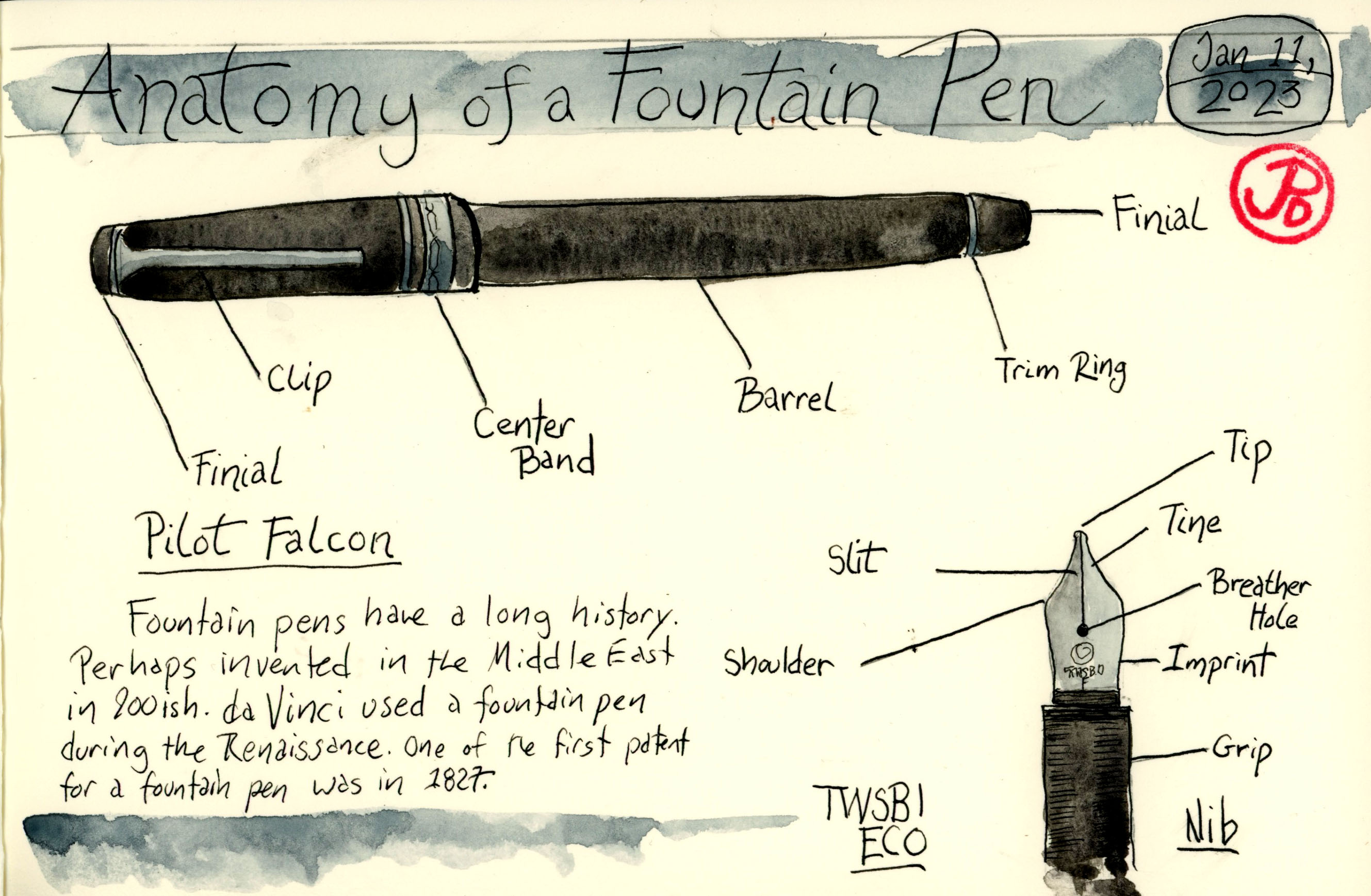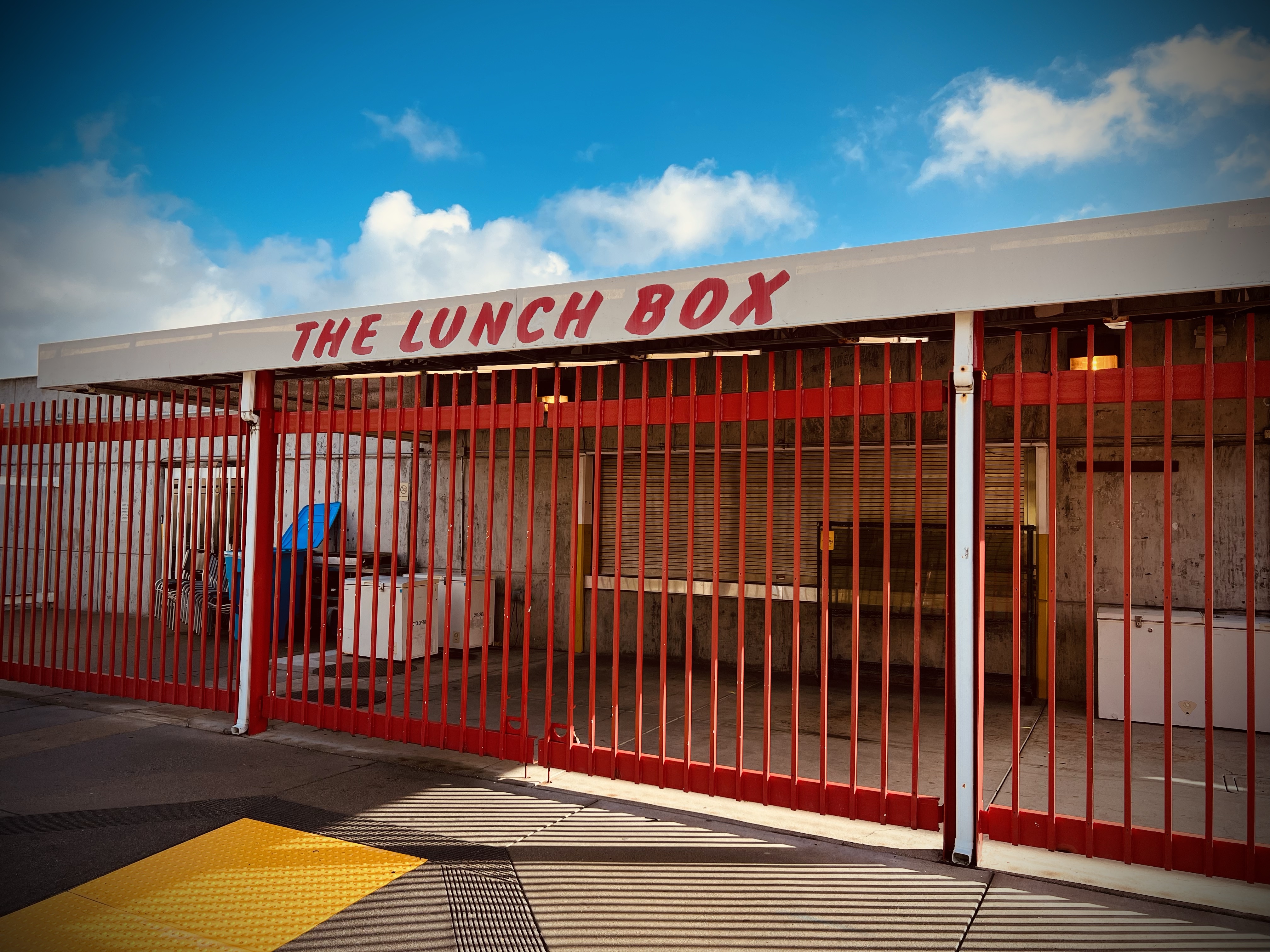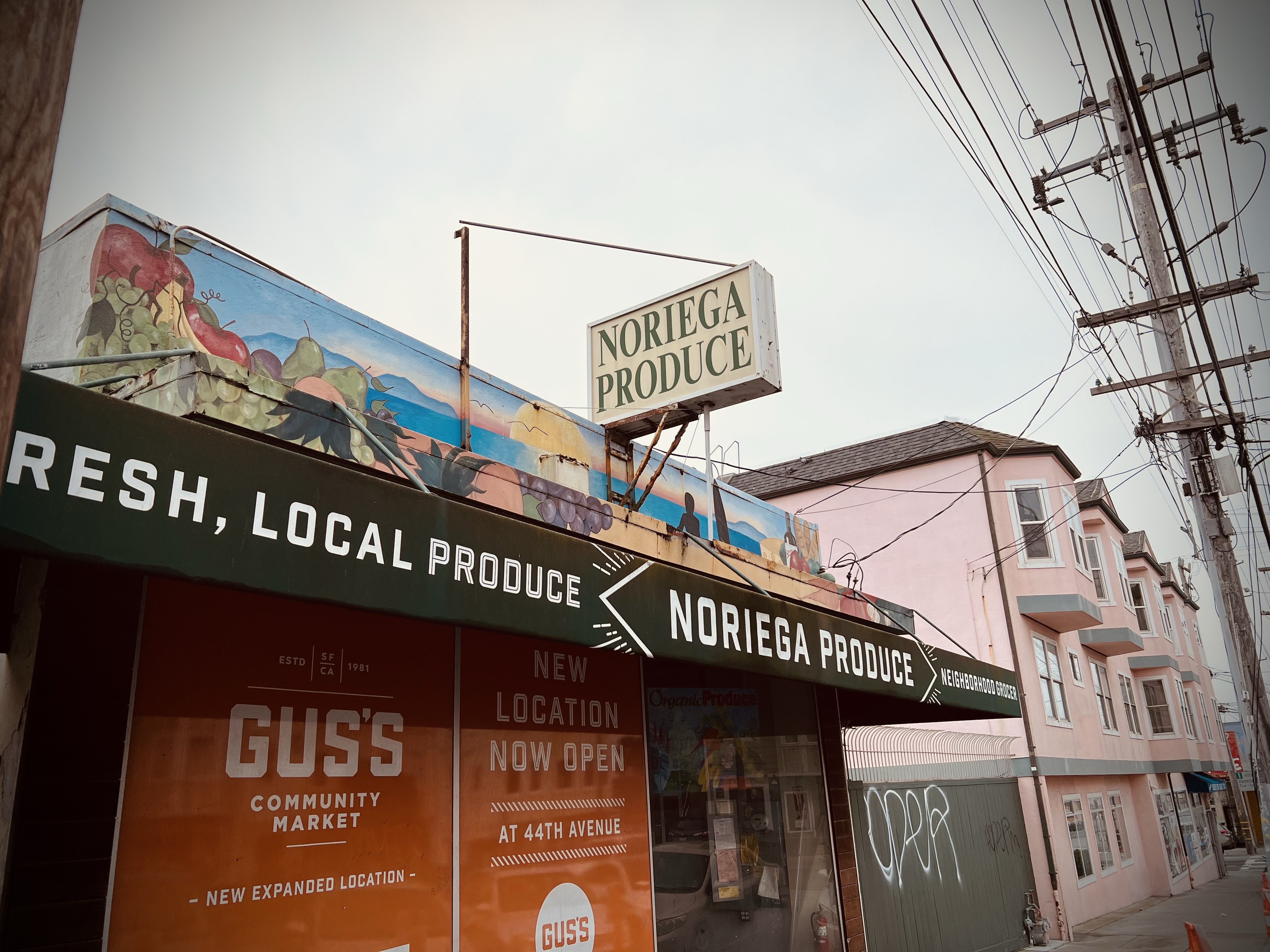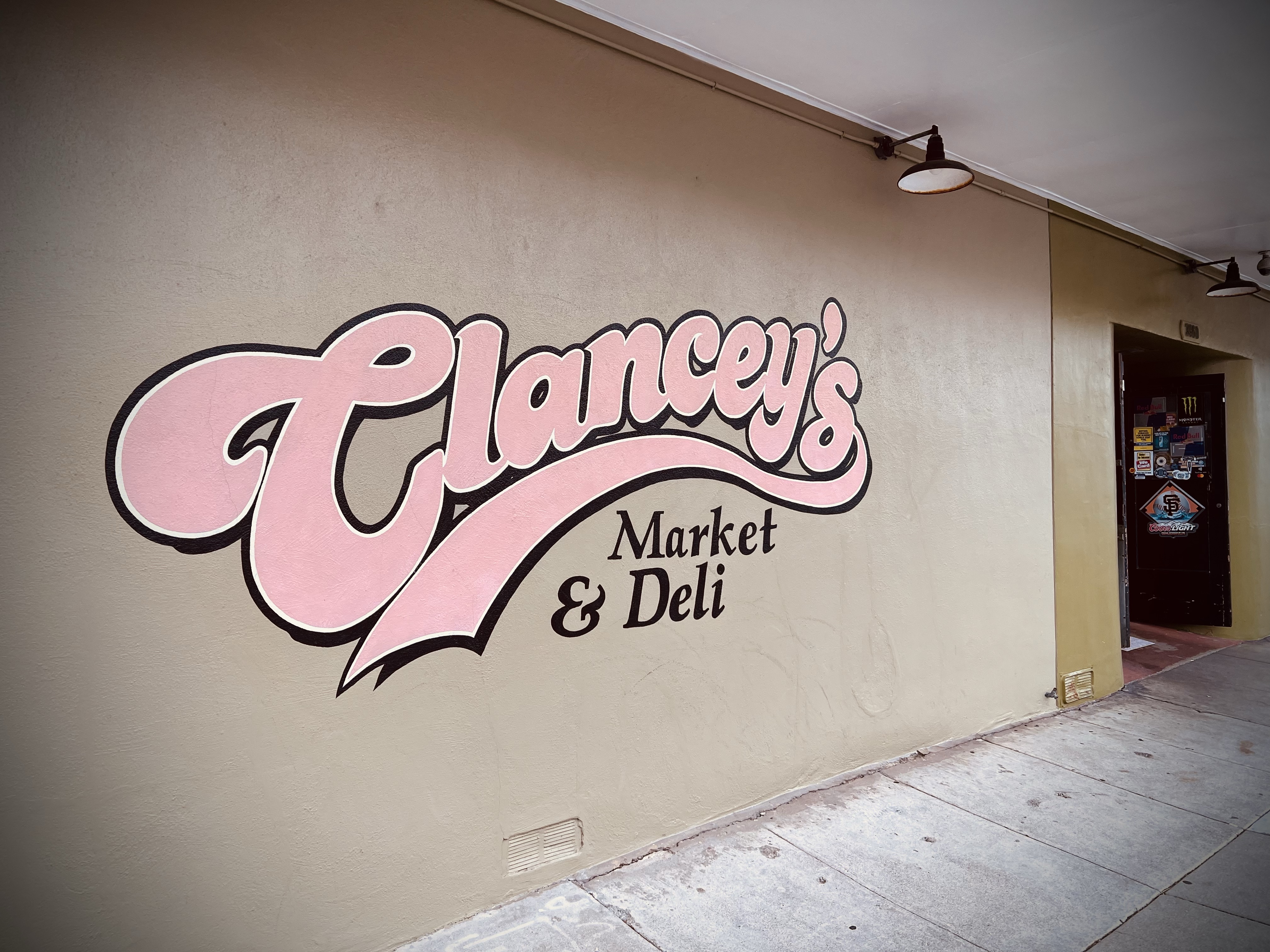The 2022-2023 atmospheric rivers (nine in total) dumped rain, strong wind, and storm surges on Santa Cruz County causing an estimated $100 million worth of damage.
In a 22 day period, the storm dumped 35.38 inches on the town of Boulder Creek in the Santa Cruz Mountains, 39.55 inches on Santa Cruz (a record amount) and left 15 feet of snow over Donner Summit. The storm systems dumped an estimated 32 trillion gallons of water on California and the storm left 20 people dead, including the man killed by a falling cypress in Lighthouse Field in Santa Cruz.
On Thursday January 19, the county got a very rare visit by a sitting president. The last president to visit the area was Theodore Roosevelt in May of 1903. There has to be some serious damage in order for the president to hop on Airforce One and fly cross the nation to the Monterey Bay Area.
President Biden visited the damaged Capitola Wharf and then headed to Aptos to view damage at Seacliff State Beach, home to the “Concrete Ship” the S. S. Palo Alto.
The Capitola Wharf was damaged by storm surge on Thursday January 5, taking out a 40 foot section of the 855 foot historic wharf, which was built in 1857. I intended to visit and sketch the wharf.
I weaved my way through residential streets of Capitola heading toward Capitol Village and the damaged pier. I found free parking on Prospect Ave (miraculously find!) and headed east toward Cliff Drive. The berm shrouded the beginning section of the wharf and as I walked east, the true damage appeared and it was shocking to see, even though I had seen photos and videos of the damage during news coverage.

Today was a beautiful winter day: clear skies, light wind, and temps flirting with the low 60s. I tried to image what the scene before me looked like 15 days ago. I tried to image the intense wind and rain and the 30 foot waves that engulfed the wharf, eventually taking large pieces of the wharf away and depositing them inside sea-fronted business. It was hard to image this on such a beautiful day.
I found a bench and opened up my Stillman & Birn Delta panoramic sketchbook and used my telephoto sketcher’s eye to zoom in on the damaged section on the wharf.
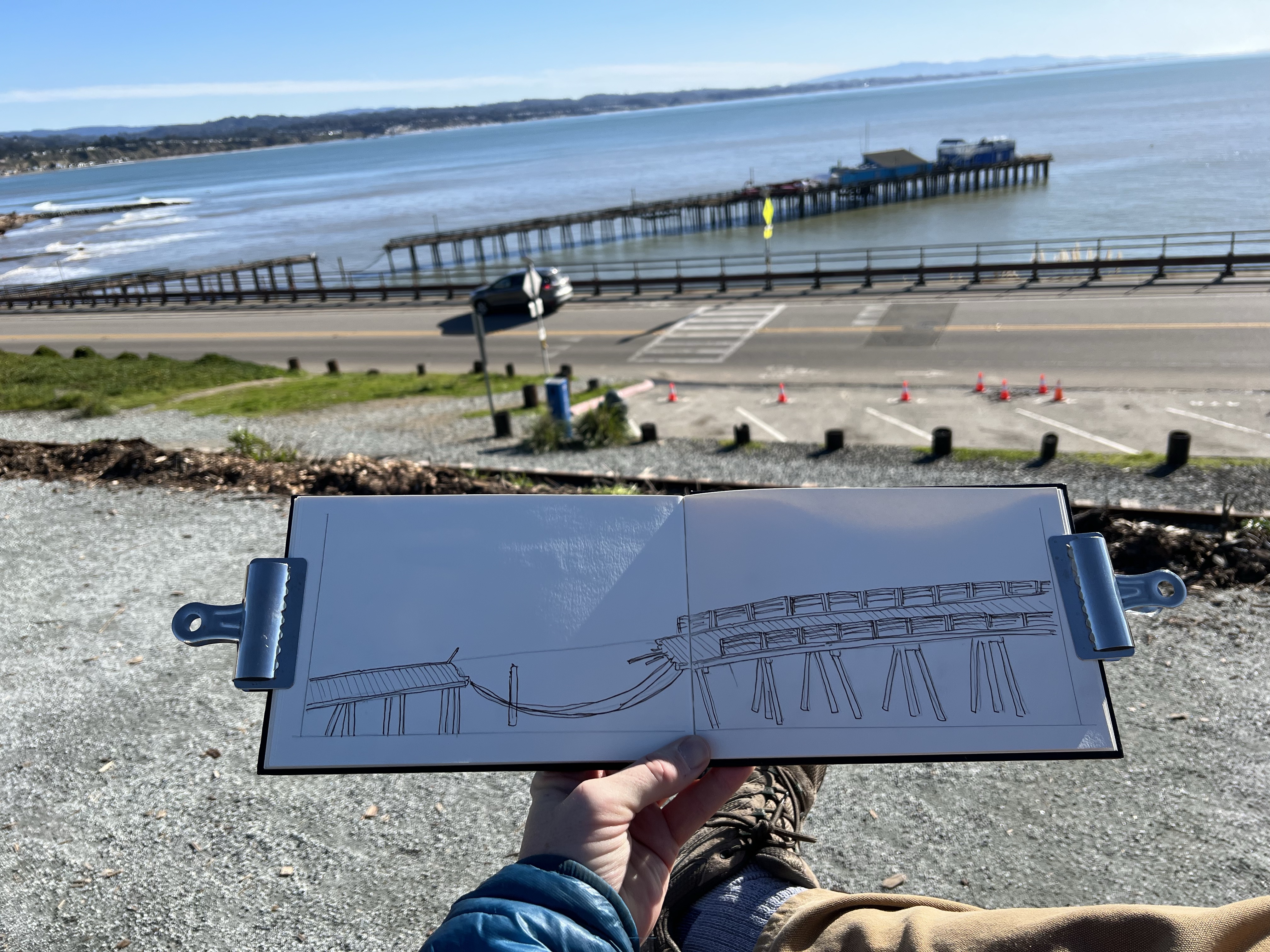
I then headed south on Highway One for a short drive to Seacliff State Beach in Aptos. It was here that the president viewed another damaged wharf and then gave a press conference about the damage he viewed and federal emergency funding.
From the upper parking lot I looked out to the segmented and ruins of the “Concrete Ship”, the S. S. Palo Alto. The ship had been torn into three pieces by a series of storms in the past but now it looked like the ship was further off shore than normal. This was really an optical illusion because the wharf that reached the ship’s stern was all but destroyed in the recent storms, leaving the Palo Alto looking like a rusting isolated island chain crowned in cormorants, gulls, and pelicans.
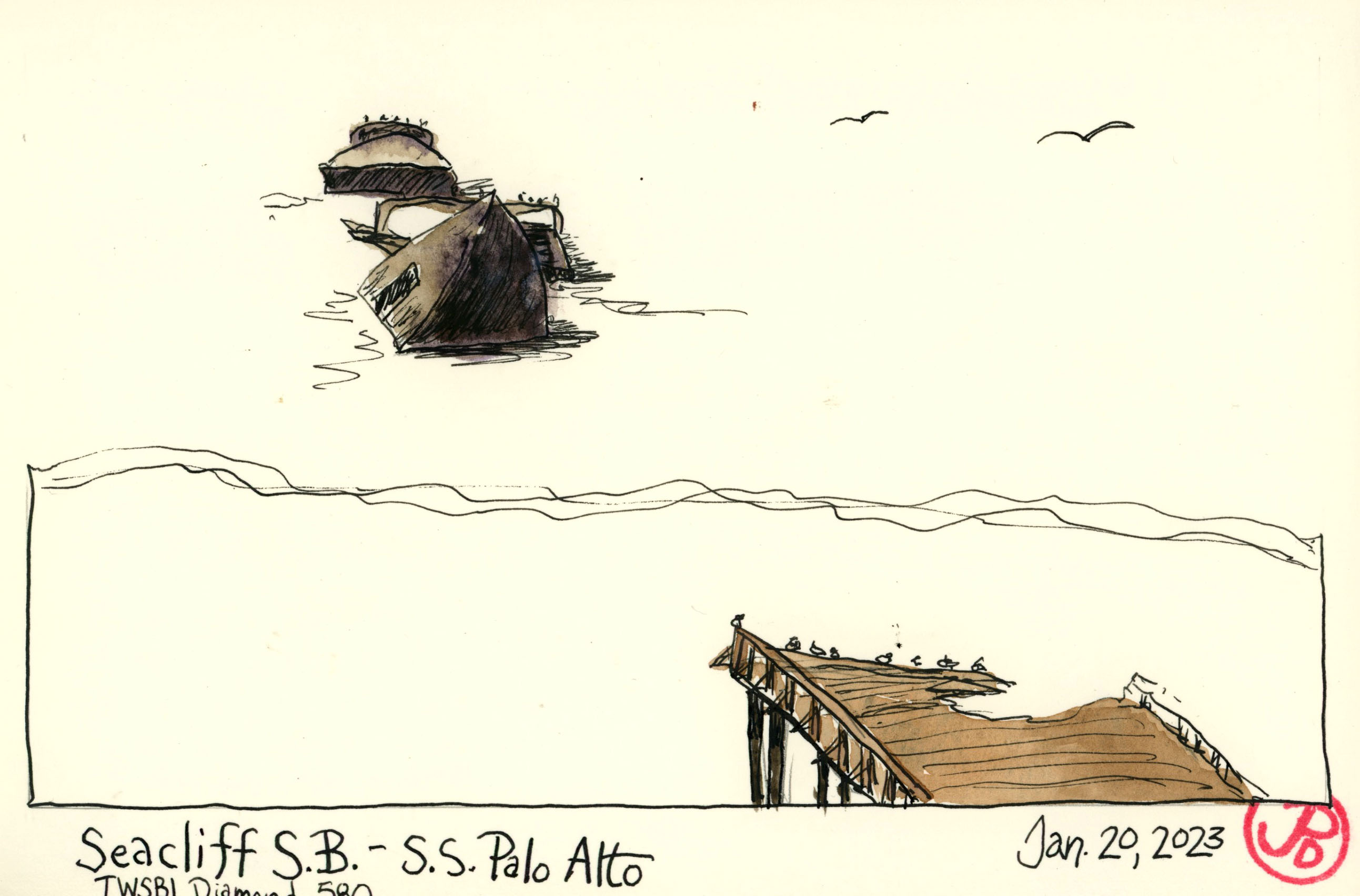
I sketched the ship with my new TWSBI Diamond 580 fountain pen. I had sketched this ship before in it’s various stages of decompose. I remember a time when I was a child when you could actually walk out on the pier and to the ship. Those days are long gone.
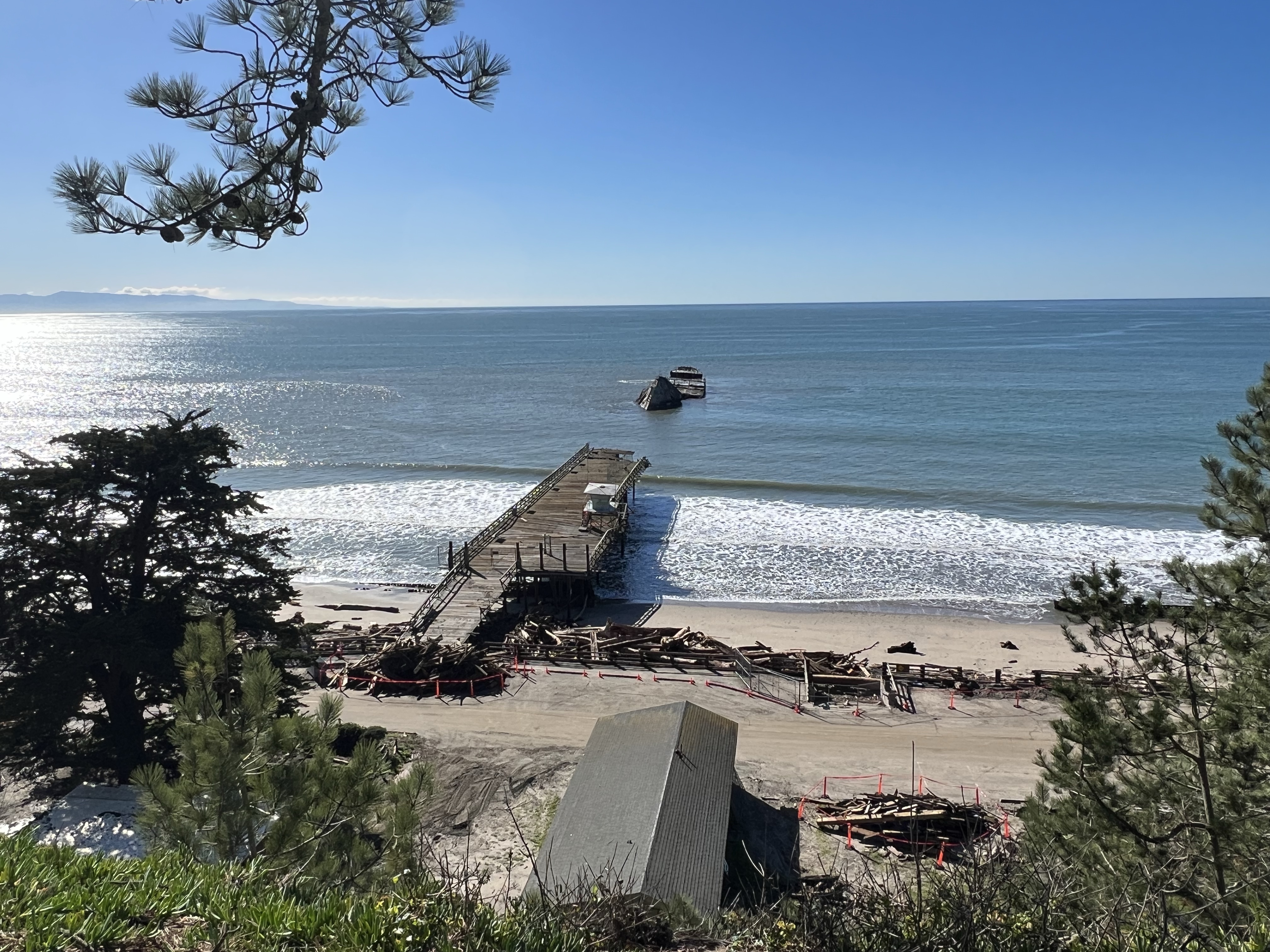
The Palo Alto was built at the end of World War I and launched in May of 1919. She was designed to be a tanker but was finished too late as the war ended. She was mothballed in Oakland and then purchased by the Seacliff Amusement Company in 1929. The pier was built in 1930 and the ship was used as an “amusement” ship with a swimming pool, a dance floor, and a cafe.
The company soon went bankrupt and the ship was sold to the state and it was then used as a fishing pier. Around this time the ship cracked in the middle during a winter storm. A February storm in 2016 pushed the ship on it’s starboard side and the ship is now in three or more pieces.



